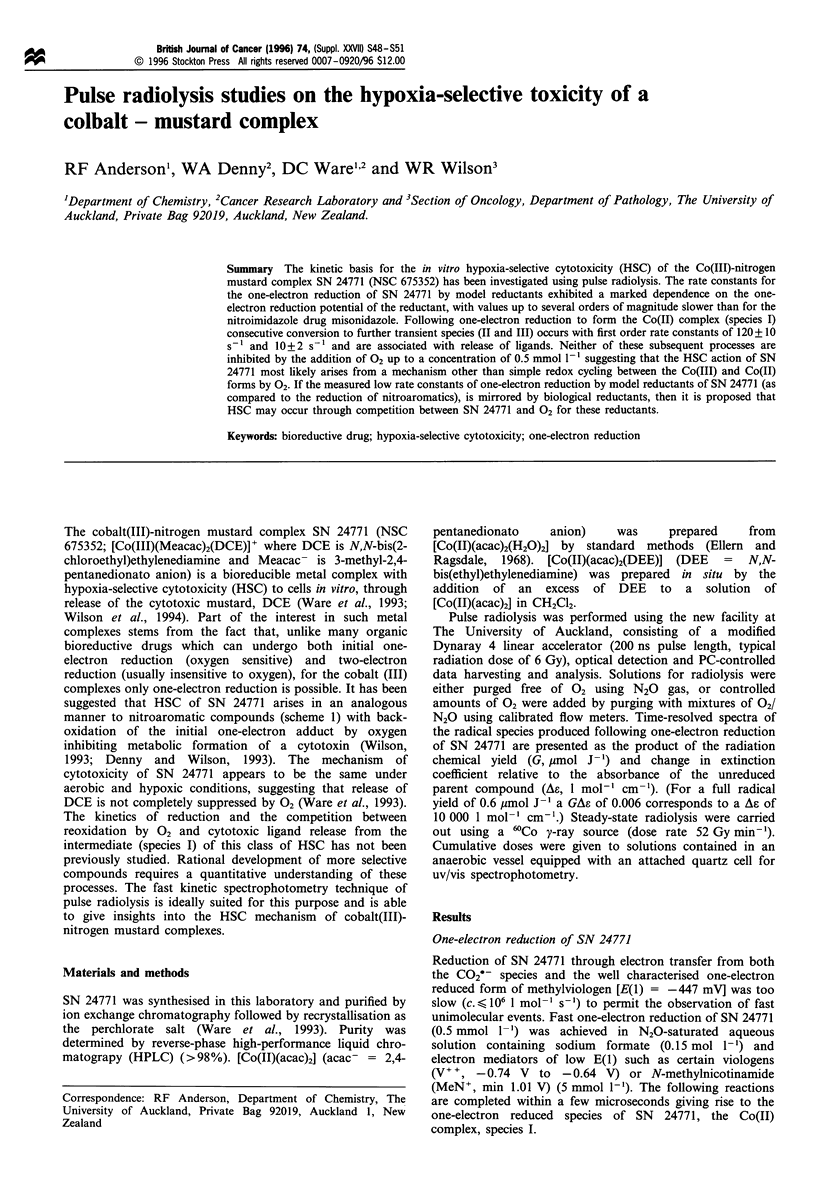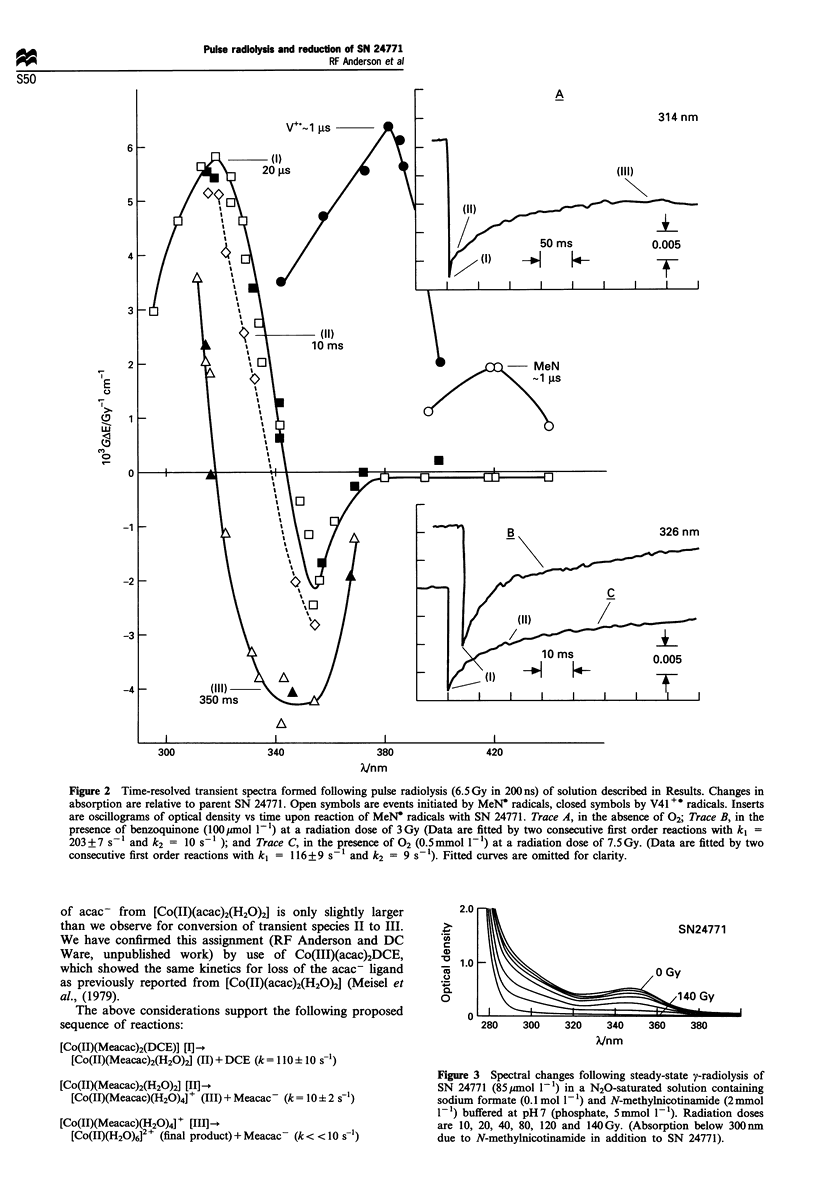Abstract
The kinetic basis for the in vitro hypoxia-selective cytotoxicity (HSC) of the Co(III)-nitrogen mustard complex SN 24771 (NSC 675352) has been investigated using pulse radiolysis. The rate constants for the one-electron reduction of SN 24771 by model reductants exhibited a marked dependence on the one-electron reduction potential of the reductant, with values up to several orders of magnitude slower than for the nitroimidazole drug misonidazole. Following one-electron reduction to form the Co(II) complex (species I) consecutive conversion to further transient species (II and III) occurs with first order rate constants of 120 +/- 10 s-1 and 10 +/- 2 s-1 and are associated with release of ligands. Neither of these subsequent processes are inhibited by the addition of O2 up to a concentration of 0.5 mmol l-1 suggesting that the HSC action of SN 24771 most likely arises from a mechanism other than simple redox cycling between the Co(III) and Co(II) forms by O2. If the measured low rate constants of one-electron reduction by model reductants of SN 24771 (as compared to the reduction of nitroaromatics), is mirrored by biological reductants, then it is proposed that HSC may occur through competition between SN 24771 and O2 for these reductants.
Full text
PDF



Selected References
These references are in PubMed. This may not be the complete list of references from this article.
- Denny W. A., Wilson W. R. Bioreducible mustards: a paradigm for hypoxia-selective prodrugs of diffusible cytotoxins (HPDCs). Cancer Metastasis Rev. 1993 Jun;12(2):135–151. doi: 10.1007/BF00689806. [DOI] [PubMed] [Google Scholar]
- Orna M. V., Mason R. P. Correlation of kinetic parameters of nitroreductase enzymes with redox properties of nitroaromatic compounds. J Biol Chem. 1989 Jul 25;264(21):12379–12384. [PubMed] [Google Scholar]
- Siim B. G., Wilson W. R. Efficient redox cycling of nitroquinoline bioreductive drugs due to aerobic nitroreduction in Chinese hamster cells. Biochem Pharmacol. 1995 Jun 29;50(1):75–82. doi: 10.1016/0006-2952(95)00112-d. [DOI] [PubMed] [Google Scholar]
- Ware D. C., Palmer B. D., Wilson W. R., Denny W. A. Hypoxia-selective antitumor agents. 7. Metal complexes of aliphatic mustards as a new class of hypoxia-selective cytotoxins. Synthesis and evaluation of cobalt(III) complexes of bidentate mustards. J Med Chem. 1993 Jun 25;36(13):1839–1846. doi: 10.1021/jm00065a006. [DOI] [PubMed] [Google Scholar]
- Wilson W. R., Moselen J. W., Cliffe S., Denny W. A., Ware D. C. Exploiting tumor hypoxia through bioreductive release of diffusible cytotoxins: the cobalt(III)-nitrogen mustard complex SN 24771. Int J Radiat Oncol Biol Phys. 1994 May 15;29(2):323–327. doi: 10.1016/0360-3016(94)90283-6. [DOI] [PubMed] [Google Scholar]


